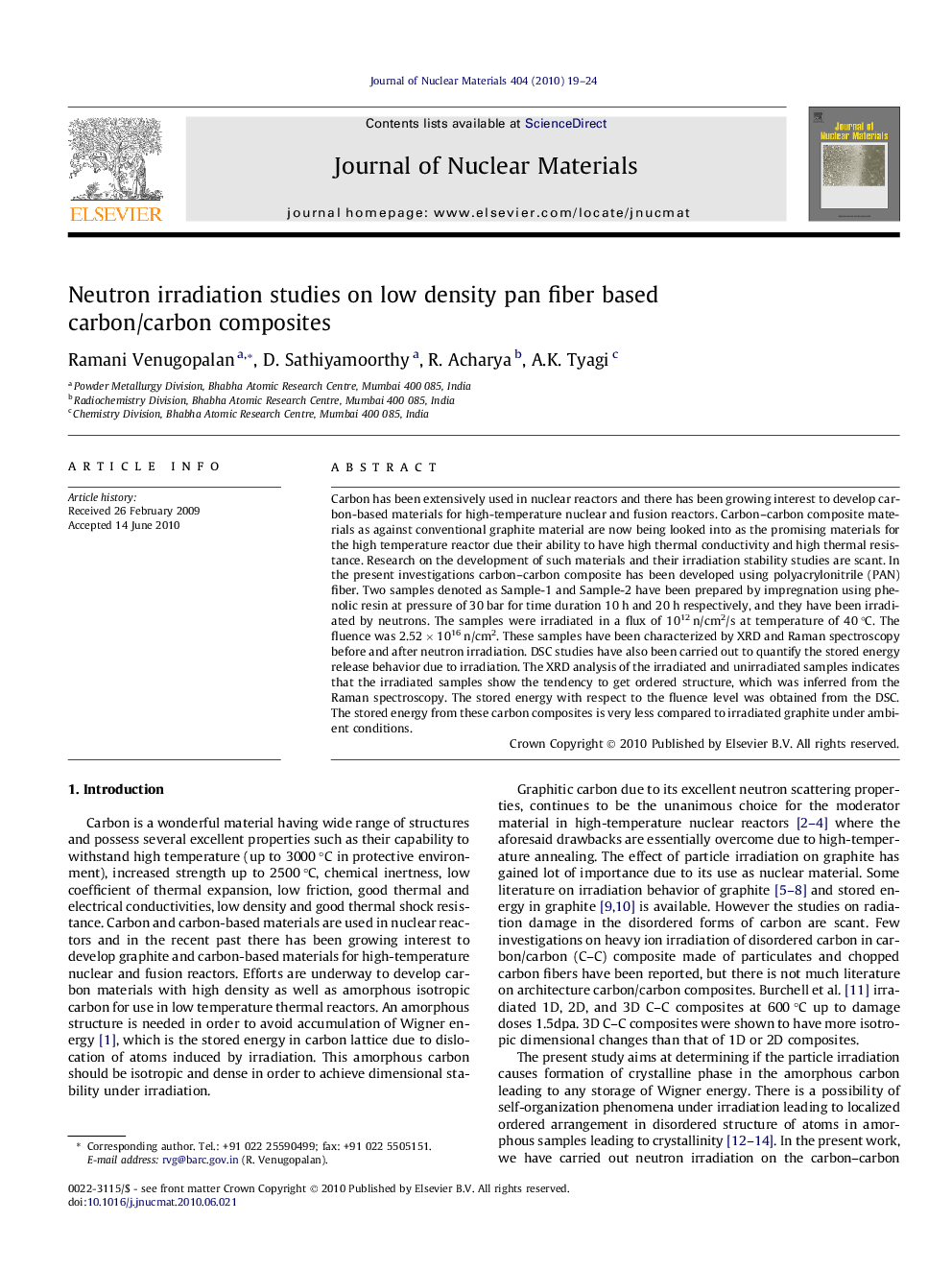| Article ID | Journal | Published Year | Pages | File Type |
|---|---|---|---|---|
| 1567740 | Journal of Nuclear Materials | 2010 | 6 Pages |
Carbon has been extensively used in nuclear reactors and there has been growing interest to develop carbon-based materials for high-temperature nuclear and fusion reactors. Carbon–carbon composite materials as against conventional graphite material are now being looked into as the promising materials for the high temperature reactor due their ability to have high thermal conductivity and high thermal resistance. Research on the development of such materials and their irradiation stability studies are scant. In the present investigations carbon–carbon composite has been developed using polyacrylonitrile (PAN) fiber. Two samples denoted as Sample-1 and Sample-2 have been prepared by impregnation using phenolic resin at pressure of 30 bar for time duration 10 h and 20 h respectively, and they have been irradiated by neutrons. The samples were irradiated in a flux of 1012 n/cm2/s at temperature of 40 °C. The fluence was 2.52 × 1016 n/cm2. These samples have been characterized by XRD and Raman spectroscopy before and after neutron irradiation. DSC studies have also been carried out to quantify the stored energy release behavior due to irradiation. The XRD analysis of the irradiated and unirradiated samples indicates that the irradiated samples show the tendency to get ordered structure, which was inferred from the Raman spectroscopy. The stored energy with respect to the fluence level was obtained from the DSC. The stored energy from these carbon composites is very less compared to irradiated graphite under ambient conditions.
